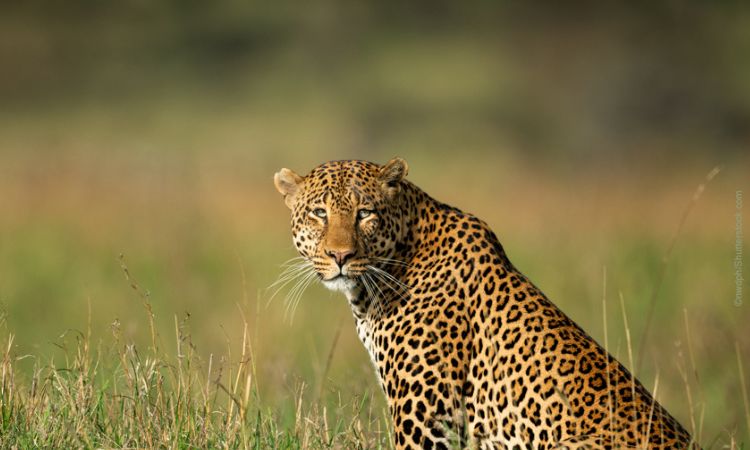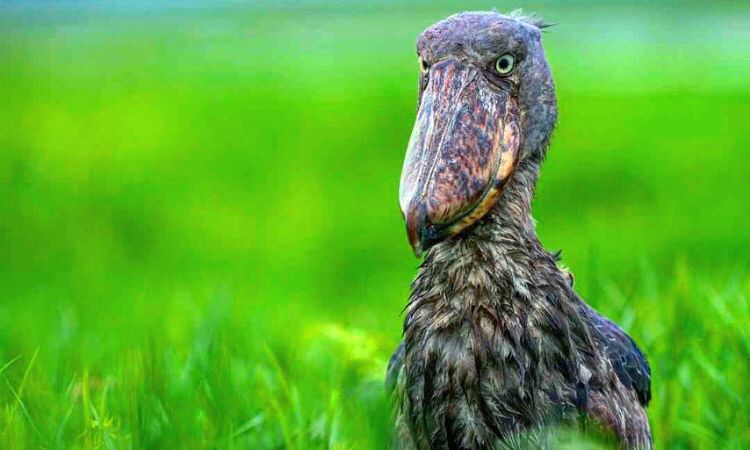List of Animals in Uganda National Parks- Updated Guide 2025
Animals in Uganda National Parks: Known as the Pearl of Africa by Winston Churchill, Uganda stands as a premier destination for wildlife enthusiasts seeking unforgettable Uganda safari tours /wildlife safaris in Uganda.
With its 10 national parks managed by the Uganda Wildlife Authority, the country boasts an extraordinary biodiversity, hosting over 345 mammal species, 1,020 bird species, nearly half of Africa’s total, 142 reptiles, 86 amphibians, 501 fish, and 1,242 butterflies.
This positions Uganda as a global hotspot for endangered species, including nearly half the world’s mountain gorillas (over 500 individuals) and a significant chimpanzee population.
In 2025, intensified conservation efforts ensure these parks deliver immersive experiences like gorilla trekking in Uganda, chimpanzee tracking, bird watching in Uganda, and classic game drives to spot the African Big Five: lions, elephants, buffaloes, leopards, and rhinos.
Whether you’re planning a budget Uganda wildlife safari or a luxury adventure, this guide covers everything from park overviews and animal encounters to conservation challenges and practical tips for your best Uganda national parks itinerary.
The Big Five Animals in Uganda: Safari Icons
The African Big Five animals in Uganda—lion, elephant, buffalo, leopard, and rhino—are a highlight of Uganda safari tours, drawing visitors to its diverse parks:
- Lions: Roaming Queen Elizabeth National Park (notably the rare tree-climbing lions in the Ishasha sector), Murchison Falls, and Kidepo Valley, these predators are best spotted during dawn or dusk game drives. Ishasha’s arboreal lions, lounging in fig trees, are a unique draw.
- Elephants: Both savanna and forest elephants thrive in Queen Elizabeth, Murchison Falls, Kibale, and Kidepo Valley. Weighing up to 6 tons, these gentle giants shape landscapes by clearing paths and are often seen in herds near water sources.
- Buffaloes: Cape buffaloes form massive herds in Kidepo Valley, Queen Elizabeth, and Murchison Falls, grazing savannas and providing prey for lions. Their imposing presence is a safari staple.
- Leopards: Elusive and nocturnal, leopards stalk Lake Mburo, Queen Elizabeth, and Kidepo Valley. Night drives in Lake Mburo N.P offer prime chances to see these spotted cats perched in trees or hunting.
- Rhinos: Once extinct in Uganda’s wild, southern white rhinos have been reintroduced at Ziwa Rhino Sanctuary near Murchison Falls. With over 50 individuals by 2025, guided walking safaris here offer intimate encounters, often paired with park visits.
These iconic species cement Uganda’s status as a top Big Five safari destination.

Primates of Uganda: A Primate Paradise
Uganda is a global leader for primate tourism, hosting half the world’s mountain gorillas and a significant chimpanzee population, making it the “Primate Capital of the World”:
- Mountain Gorillas: Found in Bwindi Impenetrable National Park and Mgahinga Gorilla National Park, these endangered primates (Gorilla beringei beringei) number over 350 in Bwindi alone. Gorilla trekking in Uganda involves 2-7 hour hikes through misty forests for a magical hour with habituated families, observing silverbacks and playful juveniles.
- Chimpanzees: Kibale National Park leads with 1,500 of Uganda’s 5,000 chimps, offering chimpanzee tracking ($50-200 permits, 95% success rate). Budongo Forest (Murchison Falls) and Kyambura Gorge (Queen Elizabeth) provide alternative tracking sites, showcasing chimps’ tool use and social behaviors.
- Golden Monkeys: Exclusive to Mgahinga Gorilla National Park, these vibrant primates inhabit bamboo forests at the Virunga Volcanoes’ base, offering a rare tracking experience.
- Other Primates: Forests in Kibale, Bwindi, and Queen Elizabeth teem with olive baboons, black-and-white colobus monkeys, red-tailed monkeys, and L’Hoest’s monkeys, adding lively encounters to forest treks.
These primates make Uganda a bucket-list destination for primate safaris and conservation enthusiasts.
Other Iconic Wildlife: Uganda’s Diverse Fauna
Beyond the Big Five, Uganda’s parks host a variety of mammals that enrich every wildlife safari:
- Hippos and Crocodiles: The Kazinga Channel (Queen Elizabeth) and Nile River (Murchison Falls) are home to hippos, often seen in pods of 20-100, and Nile crocodiles, ambushing prey during boat safaris. Hippos, the third-largest land animal, are a highlight.
- Giraffes: The endangered Rothschild’s giraffe, with its unique coat, grazes in Murchison Falls and Lake Mburo. Standing up to 18 feet, they’re the tallest land mammals, often seen nibbling acacias.
- Zebras: Burchell’s zebras, with their striking stripes, roam Lake Mburo and Kidepo Valley, often mingling with antelopes during game drives.
- Antelopes: The Uganda kob, the national symbol, thrives in Murchison Falls and Queen Elizabeth, joined by elands, waterbucks, topis, oribis, and impalas (exclusive to Lake Mburo). Their herds create dynamic savanna scenes.
- Hyenas, Jackals, and Warthogs: Spotted hyenas in Kidepo, jackals in Queen Elizabeth, and warthogs across savanna parks add character, often spotted scavenging or darting through grasslands.
These species showcase Uganda’s rich biodiversity, ensuring diverse safari encounters.
Birdlife: Uganda, a Birder’s Paradise
With over 1,020 bird species, Uganda is a top bird watching destination in Africa, particularly in the Albertine Rift. Key species include:
- Shoebill Stork: Found in Mabamba Swamp (near Entebbe) and Murchison Falls, this prehistoric bird with its massive bill is a birder’s dream, often seen wading in marshes. Learn more about a Shoebill Stork.
- Grey Crowned Crane: Uganda’s national bird, spotted in Queen Elizabeth and Lake Mburo wetlands, is known for its golden crest and elegant mating dance. Learn more about a Grey Crowned Crane.
- Turacos and Hornbills: Great blue turacos in Kibale and African grey hornbills in Kidepo add vibrant colors to forest and savanna.
- Rift Valley Endemics: Bwindi and Semuliki National Park host rarities like the African green broadbill and yellow-throated cuckoo.
With Queen Elizabeth boasting 600 species, guided birding tours in dry seasons (June-September, December-February) offer spectacular sightings.
Uganda Animals List
Below is a table listing Animals in Uganda National Parks, categorized into Rare Species, Dangerous Animals, and Herbivores.
Each category includes key species commonly associated with Uganda’s biodiversity, focusing on mammals, birds, and reptiles prominent in parks like Bwindi, Queen Elizabeth, Murchison Falls, and Kidepo Valley.
|
Rare Species
|
Dangerous Animals
|
Herbivores
|
|---|---|---|
|
Mountain Gorilla
|
Lion
|
Rothschild’s Giraffe
|
|
Golden Monkey
|
Leopard
|
Uganda Kob
|
|
Shoebill Stork
|
Nile Crocodile
|
Burchell’s Zebra
|
|
Red Colobus Monkey
|
Hippopotamus
|
Cape Buffalo
|
|
Southern White Rhino
|
Spotted Hyena
|
Impala
|
|
African Green Broadbill
|
African Rock Python
|
Waterbuck
|
|
L’Hoest’s Monkey
|
African Elephant
|
Eland
|
|
Rwenzori Otter
|
Cheetah
|
Topi
|
|
Fox’s Weaver
|
Forest Cobra
|
Oribi
|
|
Karamoja Apalis
|
Black Mamba
|
Bushbuck
|
|
Strange-Horned Chameleon
|
African Wild Dog
|
Defassa Waterbuck
|
|
Neumann’s Warbler
|
Puff Adder
|
Hartebeest
|
|
Grauer’s Cuckoo-Shrike
|
Spotted Eagle
|
Jackson’s Hartebeest
|
|
Shelley’s Crimsonwing
|
Gaboon Viper
|
Reedbuck
|
|
Red-Throated Bee-Eater
|
Cape Clawless Otter
|
Sitatunga
|

Where to See These Animals: Uganda National Parks
Each park offers unique habitats and wildlife experiences:
- Bwindi Impenetrable National Park (331 sq km): A UNESCO site for gorilla trekking, hosting 350+ mountain gorillas, plus elephants, colobus monkeys, and 350 birds.
- Kibale National Park (795 sq km): The hub for chimpanzee tracking, with 13 primate species and 375 birds in lush rainforest.
- Queen Elizabeth National Park (1,978 sq km): Diverse with tree-climbing lions, elephants, hippos, and 600 birds. Game drives in Ishasha and boat cruises on Kazinga Channel are highlights.
- Murchison Falls National Park (3,840 sq km): Uganda’s largest, featuring giraffes, crocodiles, and 450 birds. The Nile’s 43m Murchison Falls and boat safaris are iconic.
- Kidepo Valley National Park (1,442 sq km): A remote gem with lions, cheetahs, massive buffalo herds, and 475 birds, rivaling East Africa’s top savannas.
- Lake Mburo National Park (370 sq km): Perfect for walking safaris, with zebras, impalas, leopards, and 300+ birds in acacia woodlands.
- Mgahinga Gorilla National Park (33 sq km): Offers gorilla and golden monkey tracking amid Virunga volcanoes, with 120 bird species.
Parks like Rwenzori Mountains, Mount Elgon, and Semuliki add montane and forest biodiversity, ensuring varied adventures.
Best Safari Experiences: Tailoring Your Uganda Adventure
Uganda’s parks offer diverse activities for a memorable Uganda safari itinerary:
- Game Drives: Dawn and dusk drives in Queen Elizabeth, Murchison Falls, and Kidepo reveal lions, elephants, and antelopes. Night drives in Lake Mburo spotlight leopards and hyenas.
- Gorilla Trekking: A bucket-list experience in Bwindi or Mgahinga ($800 permit, book 3-6 months ahead via UWA). Treks (2-7 hours) navigate steep forests for an hour with gorillas.
- Chimpanzee Tracking: Kibale offers 2-5 hour hikes ($50-200 permits), with Kyambura Gorge and Budongo Forest as alternatives, showcasing chimp behaviors.
- Boat Safaris: Cruise the Kazinga Channel (Queen Elizabeth) or Nile (Murchison Falls) for hippos, crocodiles, and birds. Lake Mburo offers serene lake tours.
- Walking Safaris: Lake Mburo and Ziwa Rhino Sanctuary provide guided walks to track rhinos, zebras, or antelopes, immersing you in the bush.
- Birdwatching Tours: All parks offer guided tours, with Mabamba Swamp and Queen Elizabeth prime for shoebills and endemics. Consider our long 7 days Birding Watching Safari in Uganda or a short 3 Days Birding Safari Uganda Contact us to Request a quote!
Conservation and Eco-Tourism: Protecting Uganda’s Wildlife
Uganda’s conservation efforts, led by the Uganda Wildlife Authority (UWA), balance tourism with protection:
- Gorilla Conservation: Habituation and tourism revenue ($800 permits fund 80% of efforts) have increased mountain gorilla numbers from 300 in 1980 to over 1,000 by 2025.
- Rhino Reintroduction: Ziwa Rhino Sanctuary breeds southern white rhinos, with plans for park reintroduction by 2030.
- Elephant Protection: Anti-poaching patrols in Murchison Falls and Queen Elizabeth, backed by the Uganda Conservation Foundation, have reduced elephant poaching by 50% since 2020.
- Community Projects: UWA’s revenue-sharing (20% of park fees) funds schools and clinics near parks. Chili-fencing near Kidepo mitigates human-wildlife conflict.
Eco-tourism thrives with solar-powered lodges and community-guided tours, ensuring your Uganda safari supports conservation.
Travel Tips for a Seamless Uganda Safari
- Best Time to Visit: Dry seasons (June-September, December-February) offer clear trails and prime wildlife viewing; wet seasons (March-May, October-November) bring lush greenery but muddy treks.
- Permits and Fees: Gorilla permits $800, chimp permits $50-200, park entry $40/day (foreign non-residents). Budget safaris start at $200/day; luxury $500+.
- Packing Tips: Pack sturdy boots, rain gear, insect repellent, long sleeves for treks, and binoculars for birding. A yellow fever vaccine is required; malaria prophylaxis is advised.
- Getting There: Fly into Entebbe International Airport. Domestic flights to Bwindi, Kidepo, or Kibale save time (8-12 hour drives from Kampala otherwise).
- Sustainable Travel: Choose eco-lodges, follow “leave no trace” principles, and support community projects to ensure your visit benefits conservation.
